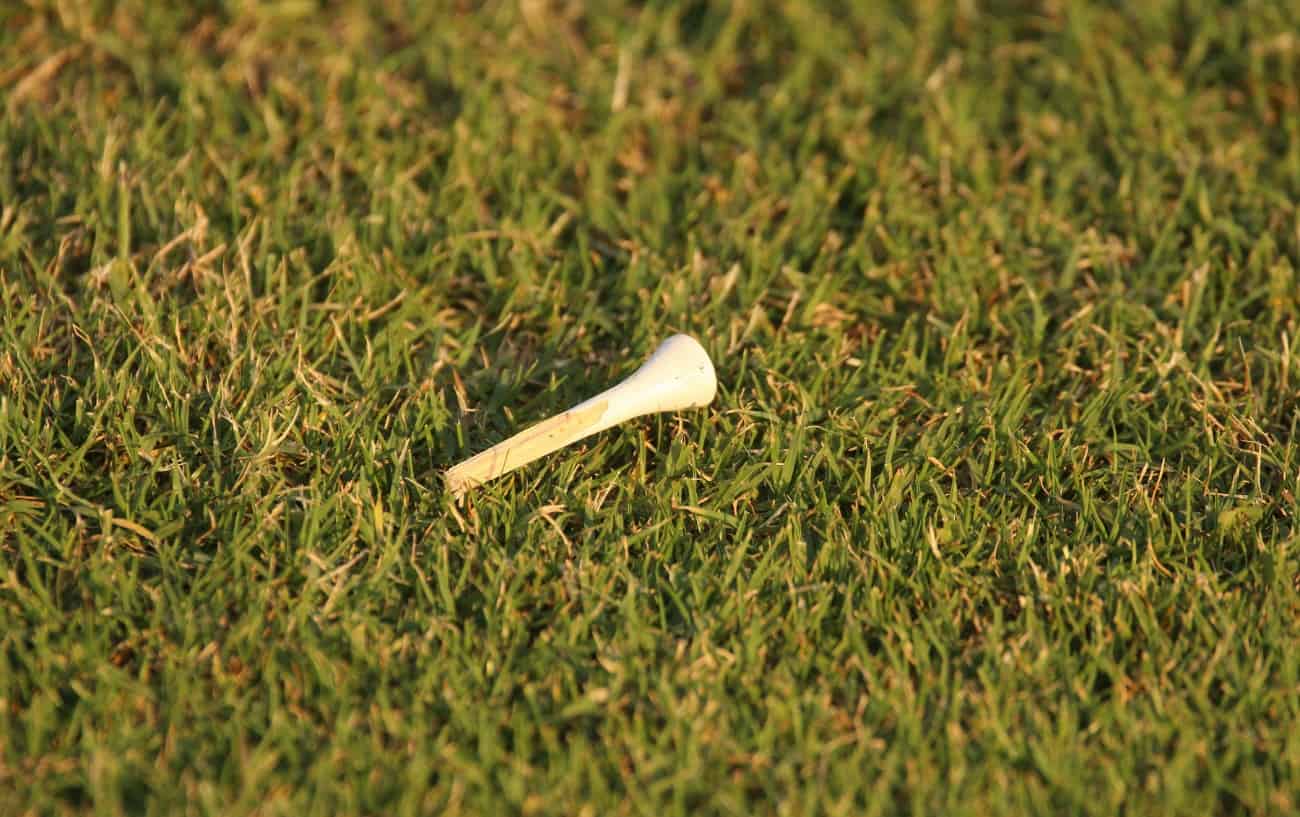The golf course is full of hazards. Yes, there are lakes and rivers, but what about dangerous animals, broken clubs, and other golfers?
The rules of golf have been designed by the USGA (United States Golf Association) to cover every scenario you might encounter while you play.
Your golf ball is stuck inside a piece of fruit? There is a rule for that. Scared of a cactus? You can find your options in the golf rule book.
We’ve gone through the rules of golf and come up with our list of the 8 weirdest. You could play golf your entire life and never need these strange golf rules.
But, there is always a chance. Be ready, just in case something crazy happens during your next round!

Strange Golf Rules: 8 Wierd Situations On The Golf Course
Below we highlight some interesting, odd, and crazy situations that are covered in the rules of golf.
You can read the full rules of golf on the USGA website or download their smartphone application. For reference, we have included the official rule number for each situation.
Strange golf rules? Let’s get started!
#1: Don’t Mess With The Gators (Rule: 16.2 – Dangerous Animal Condition)
How would you proceed if your ball ends up near a large snake or an alligator bathing in the sun?
Luckily, you don’t have to risk your life to make par. The rules of golf offer you free relief (a free drop) from a dangerous animal condition.

The examples used in the rules of golf are a poisonous snake or an alligator. You can drop another ball (no penalty) no closer to the hole, but away from the dangerous situation.
There are limits to this rule. You can’t claim to be scared of a butterfly because you don’t like your lie. PGA Tour professional Bryson DeChambeau learned this in 2020.
Bryson was playing in the first round of an event when his drive ended up in the woods and his ball was resting behind a stick. He hated the lie.
Bryson called over an official, pointed out a few ants, and asked for a free drop because the fire ants should be considered a dangerous animal. They could bite him.
Ultimately, he did not get the ruling he wanted. The tour official deemed the ants were not likely to cause the player serious damage. Good try Bryson!
#2: Hide & Seek (Rule 7.1: How to Fairly Search for Ball)
This is an interesting situation that could get you penalized during a tournament. Your ball ends up in a bunker and it buries in the sand.
How can you legally go about finding your ball? The rules of golf state that you can use your hand to brush sand aside to identify your golf ball.

Here is where it gets a little tricky. Once you determine it is your ball, you have to re-create the original lie.
In other words, you have to re-bury your ball under the sand before you make a swing. You are allowed to leave a small amount of the ball visible.
If you play your shot without recreating the lie, you receive a penalty.
#3: Can You Replace A Broken Club? (Rule 4.1: Clubs)
The rules of golf state that the maximum number of clubs you can carry during a round is 14. What happens if a club breaks or is damaged during your round?
Here is the scenario. On the front 9 your driver breaks. You have a spare driver in the trunk of your car. Can you grab it at the turn and use it on the back 9?
The rules of golf say “it depends”. If you caused the club to break by throwing it or slamming it, it cannot be replaced.
On the other hand, if the club breaks via “natural forces” (for example, you hit the ball and the shaft snaps) the club can be replaced.

Another reason to remain calm after you hit a duck hook or a banana slice! Treat your equipment with respect.
#4: The Color Of The Stake Matters (Rules 17 & 18)
Golf courses are marked by different color stakes and it is important that you understand the different colors and how they impact the rules of golf.
White stakes mean out of bounds. This means that you have to take a “stroke & distance” penalty.
Hazards (penalty areas) are marked by both red and yellow stakes. Penalty areas include lakes, rivers, creeks, woods, and high grass.
If your ball ends up in a hazard marked by red stakes, you have 4 options. Play the ball as it lies, “stroke & distance” penalty, “back on the line” penalty drop, and “lateral relief” penalty drop.
A yellow hazard only allows 3 options. They’re the same as the red, but you cannot take a “lateral relief” penalty drop.
The rules of golf allow you to decide which option you choose. We can help you make the correct decision.

#5: When Searching, Time is Of the Essence (Rule 18.2: Lost Ball)
Did you know you might need a stopwatch when you are playing golf? The rules of golf only allow you 3 minutes to look for your golf ball.
The 3 minutes start when you arrive at the approximate location of where your ball finished.
If you find your ball at 3 minutes and 5 seconds you cannot play it. Since your time has expired it is considered lost and you have to take a stroke & distance penalty.
Stroke & distance penalty means that you return to the location of your previous shot and you replay it. You also add a penalty stroke to your score.
#6: You Can’t Always Hit A Provisional (Rule 18.3: Provisional Ball)
The provisional ball process in the rules of golf can be hard to understand. If you suspect your ball is out of bounds or might be lost, you can hit a provisional shot.
You must announce it to your playing partners and only play it if your first shot is OB (out of bounds) or lost.

This helps with the pace of play. Instead of having to walk about to the original location, you can simply play the provisional ball and take the penalty (stroke & distance).
It’s the caveats to Rule 18.3 that make this rule strange. First, you cannot hit a provisional shot if you think your ball ended up in a hazard.
Secondly, if you find your first shot, you can’t choose to take the penalty and play your provisional. This is the part that is frequently messed up by golfers.
Once you find your first ball (in bounds), your provisional shot is “dead”. It cannot be used.
#7: Don’t Get Pricked (Watch Out For The Cactus)
Unless you play dessert golf you probably won’t encounter this one, but it is still interesting to discuss.
What options do you have in the rules of golf if your ball ends up next to a cactus (or thorny bush)?

A cactus isn’t a dangerous animal, so you can’t take a free drop and reference rule 16.2 (#1 above). In reality, your options are limited.
You also cannot place a towel over the cactus or thorny bush to provide padding. You can play the ball as it lies, but you may end up bleeding.
The safer option might be to take an “unplayable lie” (Rule 19). You can take relief, but it will cost you a 1 stroke penalty.
#8: Make Your Buddy Mark Their Ball (Rule 11.1: Ball In Motion)
You are playing with another golfer. Their ball is sitting on the green and you hit a putt from the green. You miss the hole, but your ball hits the other player’s ball.
What happens? It is sadness for you! The person that hit the putt while the other ball is resting on the green is assessed a two-stroke penalty!
Truly a silly way to lose strokes.
Never hit a putt until all balls on the green have been marked with a coin or ball marker – it could save you two strokes!


